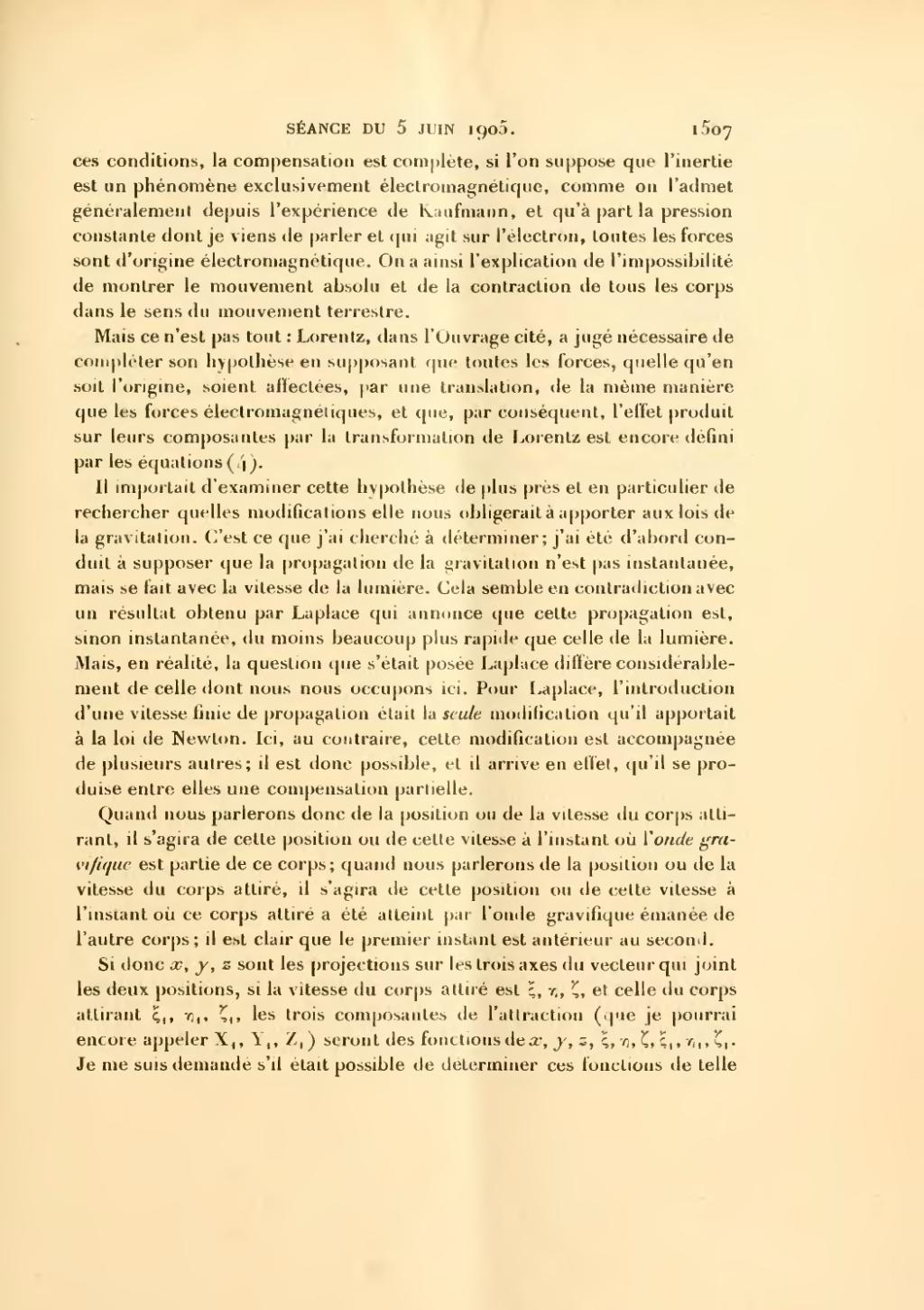that under those conditions the compensation is complete, assuming that inertia is an electromagnetic phenomenon exclusively, as generally admitted since Kaufmann's experiments, and apart from the constant pressure that I just mentioned and which acts on the electron, all the forces are of electromagnetic origin. We have thus the explanation of the impossibility of demonstrating absolute motion and of the contraction of all the bodies in the direction of the terrestrial motion.
But that's not all: Lorentz, in the work quoted, found it necessary to complete his hypothesis by assuming that all forces, whatever their origin, are affected by translation in the same way as electromagnetic forces and, consequently, the effect produced on their components by the Lorentz transformation is still defined by equations (4).
It was important to examine this hypothesis more closely and in particular to examine what changes it would require us to make on the law of gravitation. That is what I sought to determine; I was first led to suppose that the propagation of gravitation is not instantaneous, but happens with the speed of light. This seems at odds with results obtained by Laplace, who announced that this propagation is, if not instantaneous, at least much faster than that of light. But in reality, the question posed by Laplace differs considerably from that which occupies us here. The introduction of a finite velocity of propagation was the only change Laplace introduced to Newton's law. Here, on the contrary, this change is accompanied by several others; it is possible, and that is indeed what happens, that a partial compensation occurs between them.
When we therefore speak of the position or velocity of the attracting body, it will be the position or the velocity at the time when the gravitational wave leaves the body; when we talk about the position or velocity of the attracted body, it will be the position or the velocity at the moment when this body was reached and attracted by the gravitational wave emanating from the other body; it is clear that the first instant precedes the second.
So if are the projections on the three axes of the vector joining the two positions, if the velocity of the attracted body is , and that of the attracting body , the three components of the attraction (which I can still call ) are functions of . I asked myself whether it was possible to determine these functions





